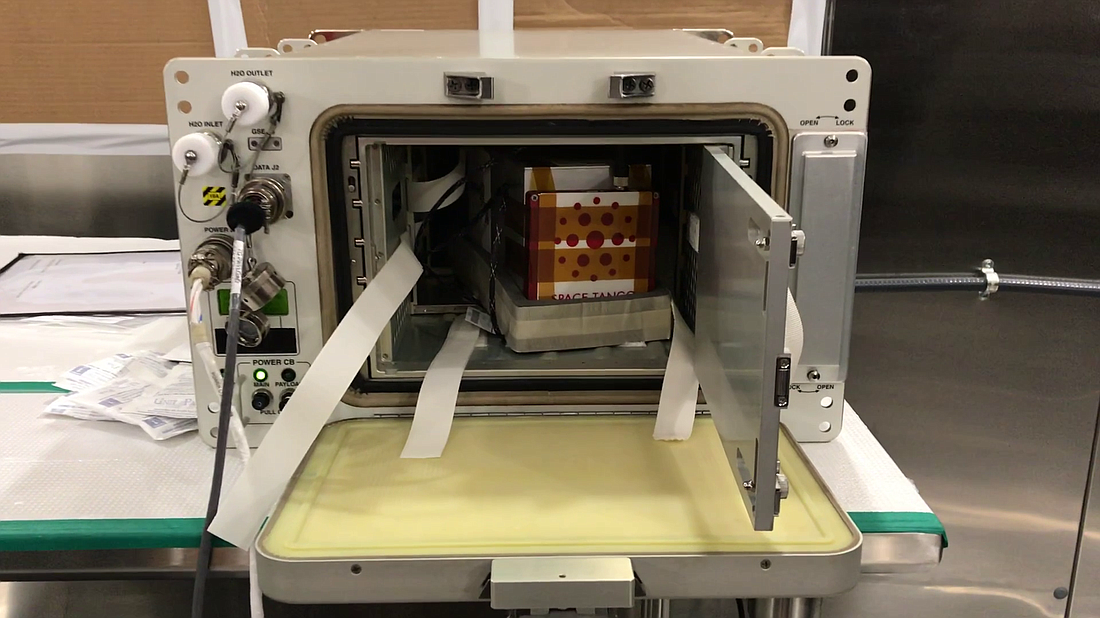- July 26, 2024
-
-
Loading

Loading

On Thursday, Nov. 15, an experiment containing muscle cells from eight Central Florida residents blasted off into space from NASA’s flight facility at Wallops Island in Virginia.
The experiment – a collaboration between Micro-gRx, Florida Hospital and SpacePharma – intends to study the negative effects of a low-gravity environment on the muscle cells in order to gain a better understanding of muscle health, said Dr. Paul Coen, an investigator at Florida Hospital’s Translational Research Institute in Orlando.
“This is a really exciting experiment,” Dr. Coen said. “It was an opportunity for us to send an experiment into space to the International Space Station. The goal of the experiment is to understand how exposure to microgravity in space can affect muscle cell biology. And this is important because spaceflight and exposure to microgravity have very detrimental effects on muscle health. It results in muscle atrophy and loss of muscle mass.”
Astronauts who spend extended periods of time in space in microgravity undergo an accelerated loss of muscle mass and tend to experience significant muscle weakness upon their return to earth. Many are temporarily restricted to a wheelchair because they're weak and need to recover.
But the detrimental effects of microgravity on muscles is what presents a unique opportunity for research focused on understanding the process behind muscular atrophy and the resulting loss in muscle mass, said Dr. Coen, who specializes in research on aging muscles.
“The negative effect of microgravity on these cells are applicable not only to spaceflight but also in a clinical context, particularly the loss of muscle mass that occurs with aging and the acute loss of mass that comes from an illness, injury or disuse,” Dr. Coen said. “For example, someone who's admitted to a hospital as an inpatient and exposed to bedrest for a few days would lose muscle mass and strength. So the results from this experiment will inform us of some of the basic biology underlying the atrophy and recovery processes not in just the context of space flight, but in a clinically relevant context.”
A better understanding of those processes can lead to development of countermeasures that can be used to help both astronauts and patients in the future, he added.
The experiment is being led by Dr. Siobhan Malany, president of Micro-gRx and a scientist at the Sanford Burnham Prebys Medical Discovery Institute in Lake Nona. Because Micro-gRx has been awarded funding for two more launches, the team will also be able to study the potential efficacy of the countermeasures aimed at preventing muscle loss, Dr. Coen said.
“We might incubate the cells with ... compounds that might protect against muscle atrophy. We can also contract the muscles by electrically stimulating them, so we can also look at any positive effects of inducing muscle contractions and see it can help prevent or reduce the negative effects of microgravity on cells.”
The cells, which are all contained on chips the size of a business card which are encased in a small 10-by-30-centimeter box, are enveloped in fluid that basically feeds the cells, Dr. Coen said. After their weeklong space vacation, the cells will be frozen for preservation and returned to earth in mid-January on a SpaceX Dragon capsule.
Once retrieved, a team will analyze them to see how they were affected by their time in space, he said. The cells will also be compared to controlled cells on remained on earth to better pinpoint any molecular and biochemical changes that may have occurred during their space vacation.
In the next five years, more experiments will be launched into space. The followup experiments will allow the research team to study countermeasures to muscle mass loss, Dr. Coen said.
“The opportunity to send an experiment up into space doesn't come up too often in one's career, so it's pretty cool to be involved in sending an experiment to the International Space Station,” he said. “But also we're really bullish in this line of research because we want to help develop therapeutics to help maintain muscle health.”